Description and cultivation of ficus Benjamin "Mix"
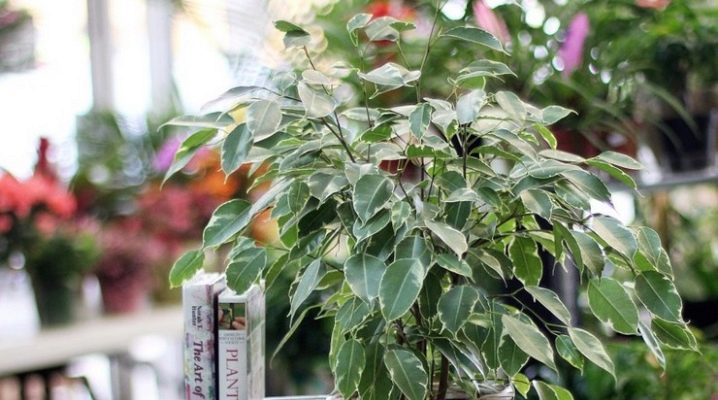
Ficus Benjamin "Mix" is a common houseplant in our country. It can be quite large if you use a large container. It is not difficult to grow it at home, just read the simple recommendations.

Peculiarities
The plant has dark green ovoid leaves that give it a lush appearance. When grown indoors, the leaves are thin, usually about 10 cm long. The branches can bend and the trunk can grow twisted.
The "Mix" subspecies is one of the easiest to care for. It grows rather slowly compared to other figs. The grower should pay particular attention to lighting, watering and pruning. This type grows well indoors, but does not like to change its location. You will notice that if you move a flower from one place to another, it can be "shaken" to such an extent that it throws off the leaves. Any change in light, temperature and humidity can stress the plant.
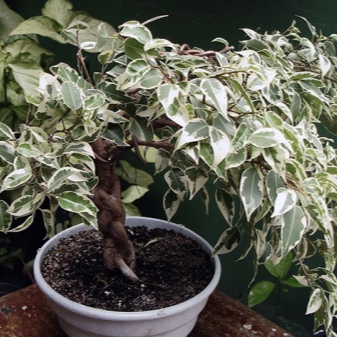

Care
Leaves are cleaned of dust by spraying them from a spray bottle. A soft cloth or sponge may be used to facilitate photosynthesis. In gratitude, the foliage will delight you with an attractive shine. It is necessary to increase the air humidity in winter. The easiest way is to install water containers indoors. Another option is to simply use a sprayer more often.
Lighting and temperature
Ficus "Mix" is a houseplant. It must be placed on a sunny window, where it will be exposed to light for 6-8 hours. He needs a lot of light, but it is important to exclude the possibility of direct sunlight.
You shouldn't use an air conditioner or heater if you want the plant to be healthy. Ideally, the room temperature should remain between 60 and 80 degrees Fahrenheit.



In general, this flower should be disturbed as little as possible, otherwise yellow foliage may appear. However, if the weather is especially warm, in late spring or summer, the ficus can be put outside for a while. It should be remembered that temperatures below 18 degrees are no longer suitable for the plant. If the temperature near the window drops during the winter months, leaves may begin to fall off. In this case, it is worth moving the ficus to another place where there are no drafts, but there is enough sun.
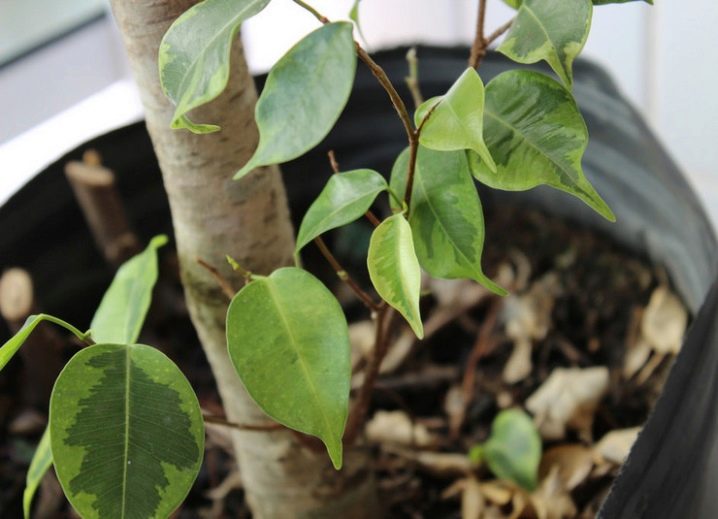
Watering
Ficus is a tropical plant, but the grower should not flood it. The soil must be thoroughly dried before the next watering. To check, you can immerse your finger in the soil and assess the moisture level. The soil should not remain dry for a long period.
As for the pot, good drainage is necessarily built in it, which allows you to remove excess water. So the root system will not suffer from rot. You can increase your moisture intake by using a spray bottle that allows you to apply water to the leaves.

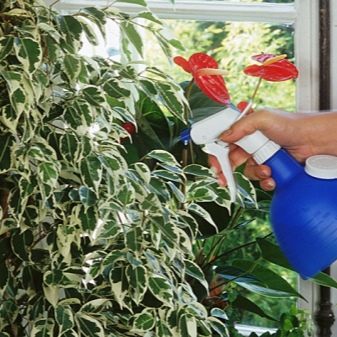
Fertilizers
Ficus is fertilized during the growing season when it is actively growing. The procedure is performed every two weeks. They use balanced fertilizers with a high content of nutrients, applying them at half the recommended rate for indoor flowers. Liquid fertilizers can be used in the spring and summer until early or mid-fall (approximately every two weeks or according to the manufacturer's instructions).
The plant also needs an extra dose of iron to keep the foliage vibrant.If the leaves begin to acquire a yellow tint or become covered with spots, it is likely that the ficus has a deficiency of this element. Fertilizer can be sprayed onto leaves for quick absorption. In this case, the agent is diluted in warm water.
It is worth noting that too much fertilizer does not always have a positive effect on the plant. Therefore, it is recommended to observe the measure in dressing.
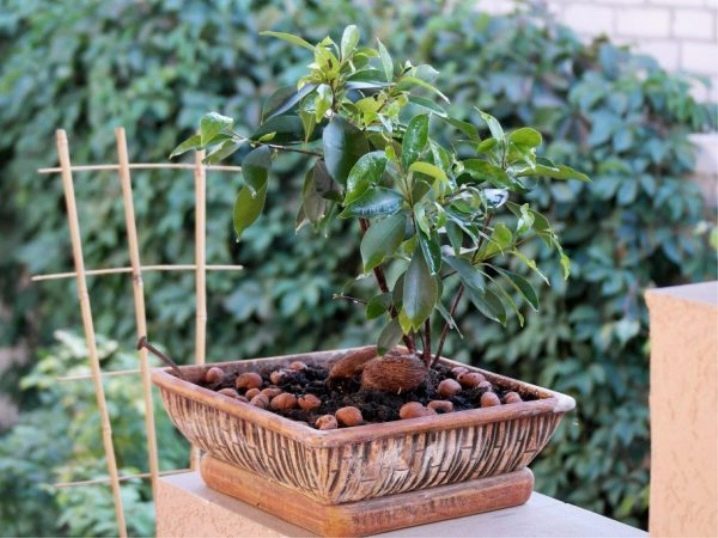
Pruning
Many new shoots can be seen in the spring, but not all of them survive. Some need to be removed so that the plant does not waste energy on them. After pruning, you can see a white liquid coming out of the cut branches. It is best not to touch it and wash your hands thoroughly after pruning, otherwise it may cause slight itching.
Ficus "Mix" responds well to the removal of branches. The procedure can be performed at any time of the year. Most growers prefer to wait for the ficus to grow large. Then they delete everything unnecessary. The result is a stocky plant with a beautiful crown shape.
Avoid pruning more than once a year. The procedure is only available if the plant is healthy.
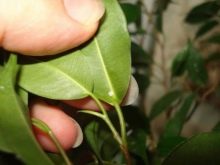


Transfer
Healthy ficus can be transplanted no more than once every two years. However, you should not be attached to strict deadlines. If after a year the roots growing from the container become noticeable, then it is worth changing the pot, since this plant is already cramped.
The best time to work is early spring or mid summer. The plant is carefully removed from the container, exposing the roots. Fill a new pot with fresh soil, water it thoroughly. After that, the ficus is placed in a shady place, where it receives diffused sunlight. The plant is given three weeks to restore the root system, and then moved to its old place.
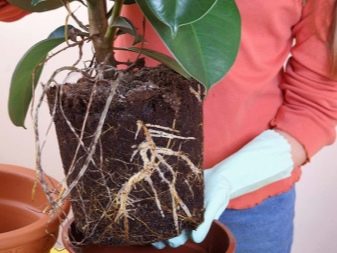
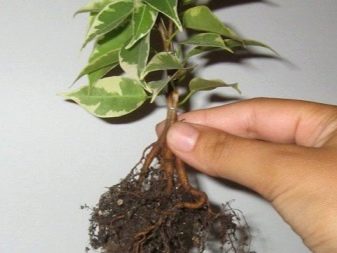
Diseases
These plants are generally resistant to disease, but sometimes insect infestation occurs. They are clearly visible on foliage, especially on the underside. You can also identify pests on the branches by tiny, flat spots of various shades.
Sometimes they look so natural on the plant that you might even think they are part of the coloration. But there is a way to be convinced of the opposite: it is worth trying to remove one speck with your fingernail or the end of a knife. If it goes away, then you can be sure that this is a sign of defeat.
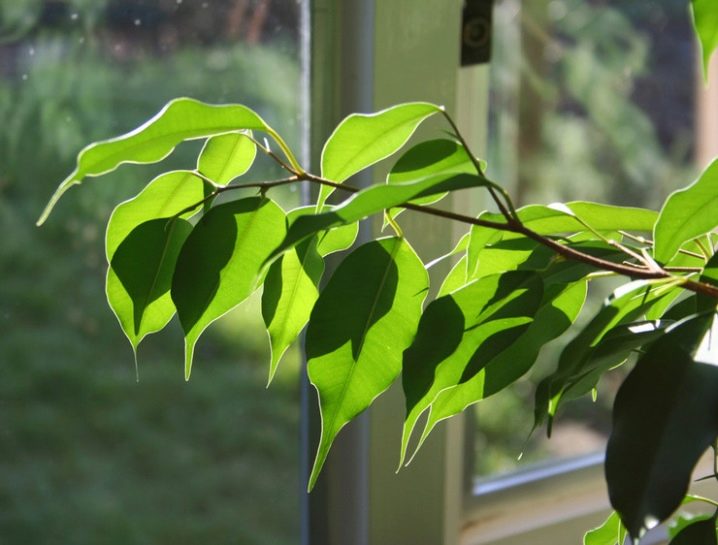
Be sure to check the leaves for the presence of a sticky substance produced by insects.
To get rid of the problem, you should proceed in the following order:
- isolate the affected plant;
- carefully study the problem and remove those leaves that are severely affected (for this, use a plastic bag, where they are folded, and then taken out of the house);
- pour the ficus with a strong pressure from the shower, let the excess water drain;
- create an insecticide (mix warm water with alcohol in a 3 to 1 ratio and add 3 drops of regular dishwashing liquid);
- mix all the ingredients and spray the composition on the plant, paying special attention to the lower part of the leaves.
Spraying is repeated after 7-10 days. If you properly care for the flower, then the problem can be dealt with pretty quickly.
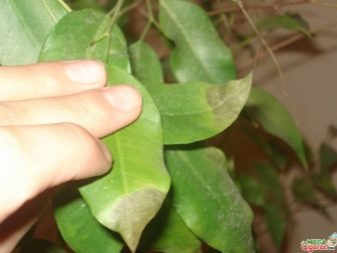

Features of caring for Benjamin's ficus at home, see the video below.































The comment was sent successfully.